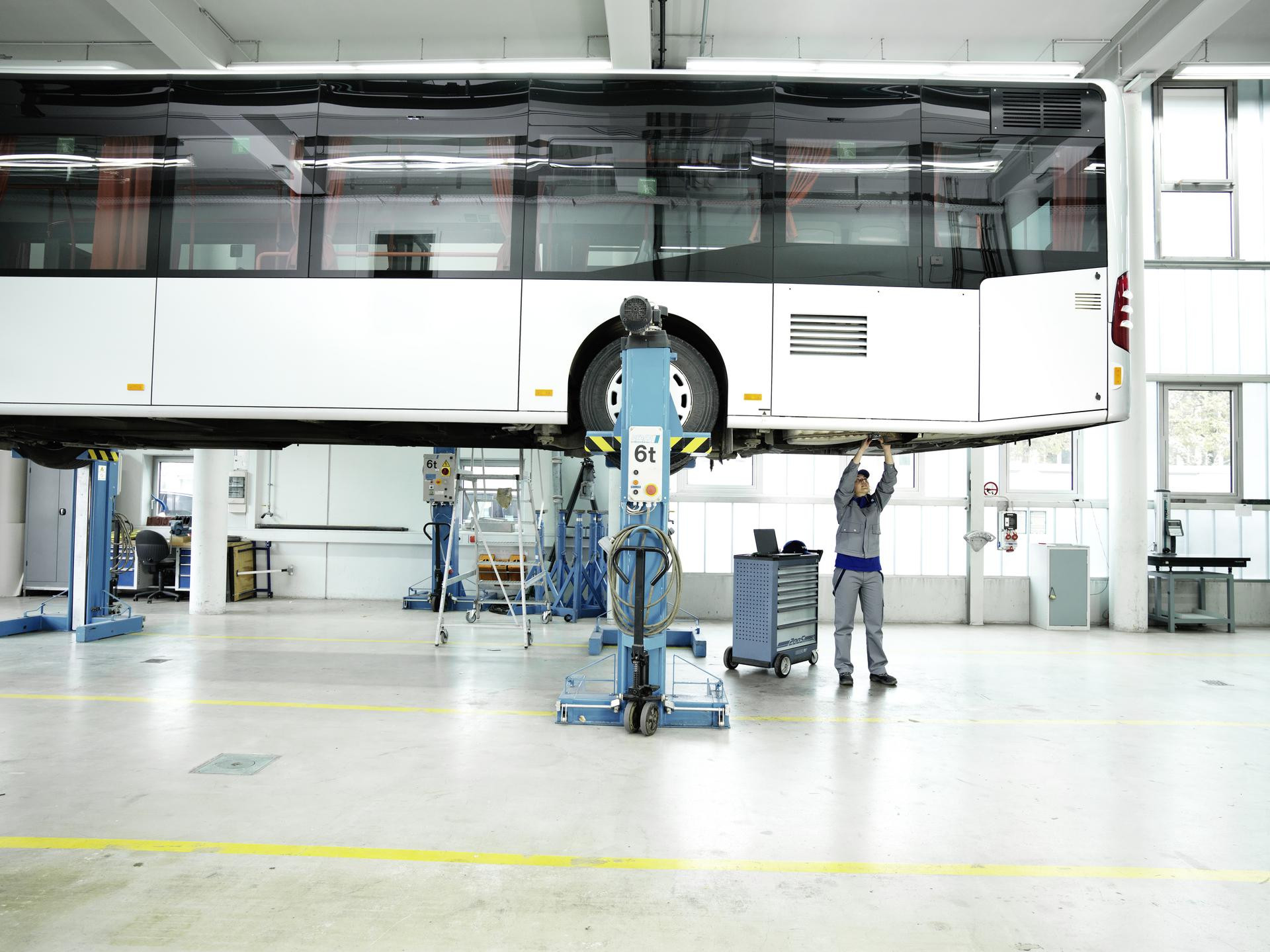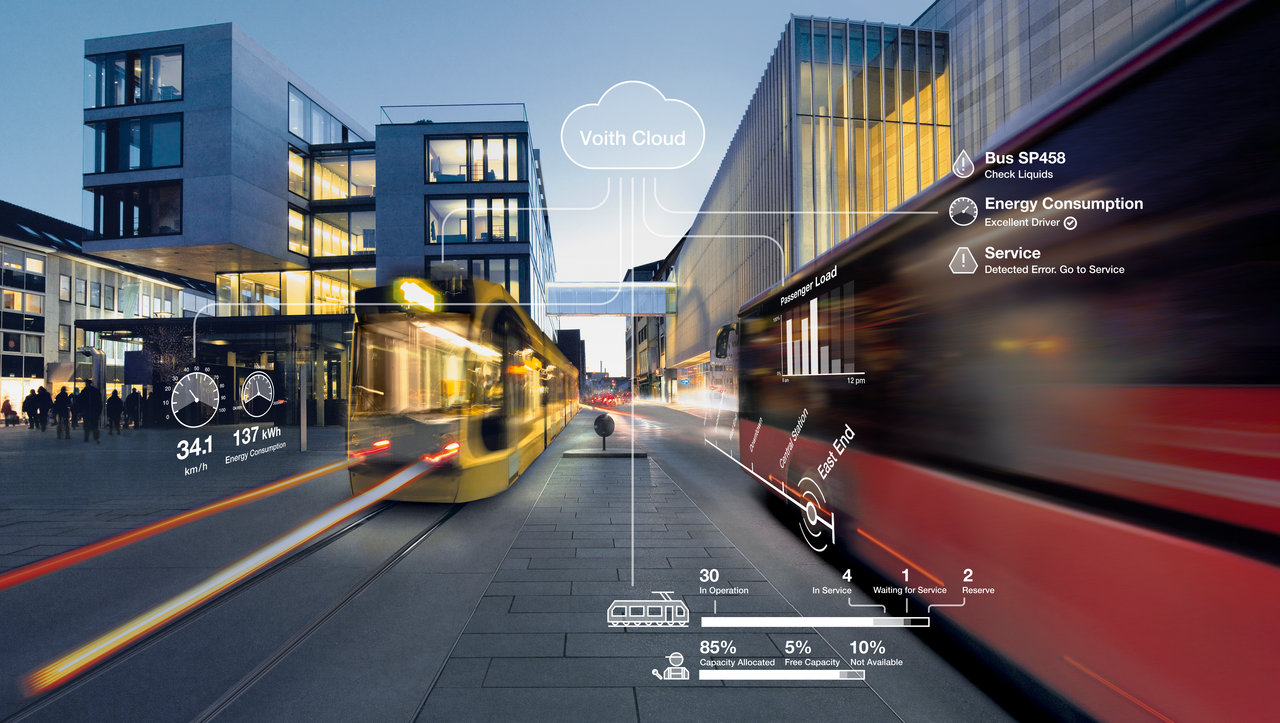Serving the “complete vehicle”: A study of Voith Turbo’s commercial vehicle services
By Bradley Osborne - 27th July 2022

The following is based on an exclusive interview T&BB conducted with Johannes Ilg, VP Service Sales Management at Voith Turbo, the automotive technology division of the Voith Group.
Germany – Only fifteen or so years ago, the services which Voith Group provided to its customers were entirely conventional. At the point of sale, the manufacturer would enter into a series of agreements with the customer, promising the provision of maintenance, repairs, and replacement parts – and, of course, it still does so today. The documentary apparatus – the product guarantees, warranties, and contracts – which makes up what we call ‘customer service’ remains the fulcrum on which the relationship between manufacturer and customer hinges. Yet this aspect of the automotive business is all too easy to take for granted, and even to marginalise and ignore. The word ‘aftermarket’, used in English as a catch-all term for the economy of services and spare parts which has grown up around the industry, is itself demeaning: it is ‘after’ the ‘market’, after the manufacture and supply of the original product which is the main event. The primary activity of the original equipment manufacturer is the making of products; everything after that is secondary.
And yet, in the past fifteen years, the balance between ‘market’ and ‘aftermarket’ at Voith has shifted; and what is taking place at Voith is exemplary of a greater change in the industry – or, in fact, Industry as a whole, if we take into account Voith’s other concerns in hydropower and papermaking. For the last ten years, Johannes Ilg, now Vice President Sales Support & Product Management at Voith, has helped to oversee the changes that have happened at the German manufacturing group.
Some of these have been extensions of a conventional model of service provision. Voith’s global footprint was established in that time, so that today it has 41 workshops and many more dedicated service partners across the world. The group has fashioned an incredibly efficient machine for customer service provision: for instance, Voith workshops are usually able to supply a replacement part in any of its established markets within 48 hours of a reported fault.
The workshops are not only engaged in providing spare parts; they are increasingly involved in the remanufacture of old parts, something which Voith realised is often more efficient and less costly than supplying entirely new ones. Starting with the repair of DIWA transmission systems, Voith was able to cut down service times by 60% with efficient manufacturing processes by refurbishing old systems instead of replacing them. Although reconditioning used parts is nothing new, more and more original equipment manufacturers are now expanding their remanufacturing capacities, to reap not only the cost and efficiency benefits but also the gains made towards reaching sustainability targets.
The biggest shift, however, began in Dubai in 2010, with the first rollout of ‘DIWA SmartNet’, a telematics system giving bus operators an overview of vehicle operational data and insights into improving vehicle use and maintenance. Since then, digital services of this kind have become the main thrust of service innovation at Voith, taking on a role in Voith’s business which is no longer subordinate to the original equipment – the ‘physical’ output of the business. Digital aftermarket services now constitute a product range which is complementary to the other business sectors within the group. Using data pulled from Voith components operating as parts of a vehicle, Voith can now offer services which provide for “the complete vehicle”.

Servicing a DIWA transmissions system at a Voith Turbo maintenance centre
Maintenance-as-a-service
How might digital technology change the way in which routine and emergency maintenance is provided? Some of the more obvious developments in maintenance provision in recent times are in fact modifications and improvements to the conventional forms of customer service. One innovation – remote service – was forced as a result of COVID pandemic restrictions which prevented in-person vehicle repairs from taking place. A case study published on 4 May 2022 details how digital tools enabled a service team based in Kiel, Schleswig-Holstein to hand over a product to a customer, Belgium-based freight transport specialist Lineas, and complete the necessary legal processes without being physically present. While it deals with locomotives, the situation described is readily applicable to automotives, and to other kinds of service provision such as routine checks, diagnostics, and final article inspections. Conducting these kinds of service remotely will not, according to Ilg, replace in-person services entirely; in fact, the one is already complementing the other. Remote diagnostics, for example, mean that technicians can arrive at the customer site already knowing what exactly is wrong with the vehicle and what parts are needed to fix it.
The shift, however, to what Voith calls ‘maintenance-as-a-service’ entails more than the mere enhancement of old forms with new technologies. It involves a shift in perspective: seeing the “bigger picture” of what is going on with a vehicle while it is in operation, instead of simply zeroing in on the faulty parts; thus, the service provided has to expand to encompass the whole vehicle, treating it as a complex system and not merely a combination of working (or defective) components.
This new perspective is enabled by ‘big data’, or the aggregate of all the data which Voith continuously pulls from its components in real-time operation across the world. It allows Voith services to carry out predictive maintenance, anticipating which parts need to be repaired or replaced before they go wrong. It also allows for ‘smart’ maintenance, or for maintenance services based on artificial intelligence. Machine learning tools mean that Voith components are continuously building up vehicle use profiles and adjusting to specific applications accordingly – all fully automated. Human maintenance services benefit from the data as well. When technicians go out to inspect parts, they take with them a case history of the part’s use and its performance; meaning that, in effect, every Voith component has a medical history, as it were, which is particular to it and it alone. But this kind of service is only possible because the data specific to the individual part is connected to data taken from the vehicle as a whole, so that data insights taken from the part can be used to optimise the performance of the whole system.
OnCumulus: Voith’s digital platform
The vehicle for Voith’s ‘maintenance-as-a-service’ offering is its digital platform called ‘OnCumulus’. It is the group’s answer to modern cloud-based services – that is to say, data which is stored and collected in a single place and accessed remotely by the user – and hence the name is a riff on ‘the Cloud’.
First and foremost, OnCumulus is a database storing all the information which is collected from the group’s business operations and its product lines. It is a tool used by Voith itself to garner data insights into its own manufacturing and service operations. But it is also a product in its own right, a subscription service which allows customers to leverage the mass of collected data to optimise their respective business operations. Using various ‘apps’ – some of which are free to use and others which come with extra costs – the customer receives data analytics for a range of different uses, all of which are intended to make it easier for the customer to understand how well their vehicles are operating and how they might increase their efficiency and avoid predictable faults which incur downtime.
In this way, Voith’s maintenance services become a constant companion, a means by which the customer may continuously improve their fleets. They are no longer a service which is encountered only when something goes wrong, before dissolving again into the background. And all the time, according to Ilg, Voith’s software development teams are creating new apps which expand the range of data analytic tools available to the customer.
Conclusion: Vehicle services and Industry 4.0

In a piece entitled “How the IIOT1 affects the industry 4.0”, Voith makes the following statement:
[Digital] platforms have a critical advantage: they can be used as a fully-developed infrastructure without the company having to build or maintain it. […] Platforms are increasingly becoming the central business model of the digital economy.
And we recall, of course, that Voith is involved in a number of different industrial sectors, all of which have seen a number of innovations related to digital technology and artificial intelligence. But for the sector which chiefly concerns us here – the commercial vehicle industry – the introduction of cloud-based or digital platforms has radically changed the relationship between the manufacturer and the customer. Manufacturers are investing more resources into the provision of services than ever before. They increasingly see the dynamic between producer and consumer in a holistic way, and they see themselves as providers of a ‘whole systems solution’ and not simply a discrete product which needs to be checked over by a technician now and again.
Voith, Ilg claims, has been ahead of the curve in navigating this shift in service provision, being one of the first major companies to use and “shape” the term ‘Industry 4.0’ and to adopt its tenets as a point of corporate strategy. What the term means to Voith is leveraging the “core knowhow” which the group has collected and built upon since it was founded over 150 years ago. The commercial vehicle industry itself is over a century old: but now it has the tools to systematically collect, organise, and analyse the industrial and business experience it has accumulated on a massive scale; and it now also has tools to communicate its insights from this data to help customers optimise their fleets.
These digital tools, however, do bring some new difficulties. Ilg repeatedly emphasises the importance of robust and comprehensive cybersecurity, especially when handling large volumes of sensitive information about a wide range of different companies and their business operations. ‘Industry 4.0’ will need to come up with surer defences for customer data, as cloud-based platforms for customer services become more widespread and more tempting targets for hackers.
Ilg observes that the emergence of digital tools and data-driven services in the automotive industry is indicative of a general trend: manufacturers are shifting from specialising in a single type of component to developing a systems approach, with electrical components communicating and mutually supporting one another. Expertise in both mechanical and software engineering will be needed to “harmonise” the parts which make up the whole system. Likewise, companies such as Voith will continue harnessing both radically new forms of ‘smart’ maintenance and traditional, face-to-face forms of customer service provision. The key is to ensure that the entire service ‘ecosystem’, as it were, is able to work harmoniously, like the components in a vehicle, in order to push for further gains in efficiency and productivity.
1 Industrial Internet of Things.

Johannes Ilg joined Voith in 2012 as an aftermarket manager, following his studies for a B. Eng in international technical sales. He has since held a series of positions within the Voith Turbo division, including Head of Global Inventory Management and VP Service Product Management and Sales Support. His current responsibilities include sales support, project management and offer and order management for commercial and rail vehicles.


-of-Knorr-Bremse-AG.jpg?w=400&h=225&fit=crop)